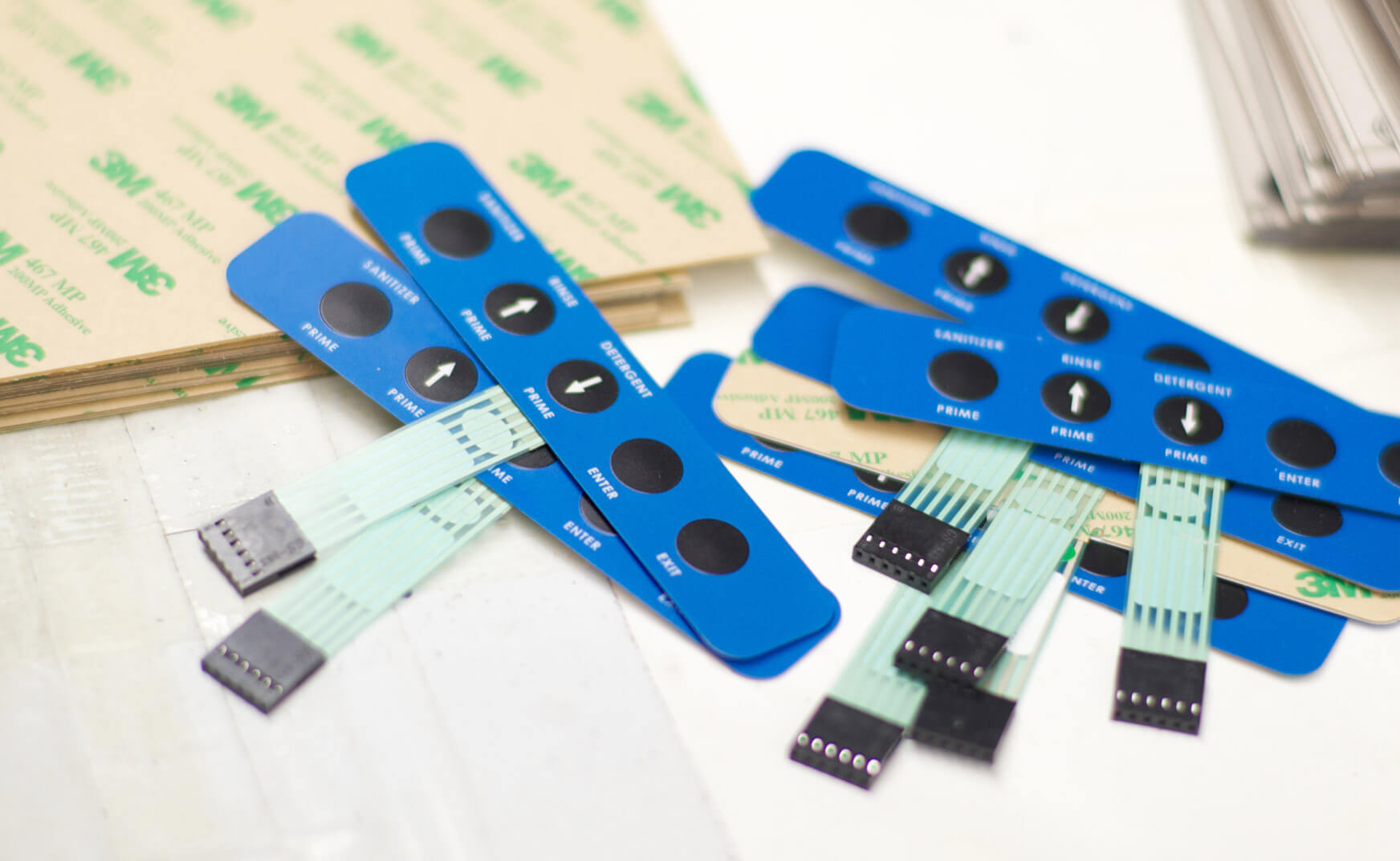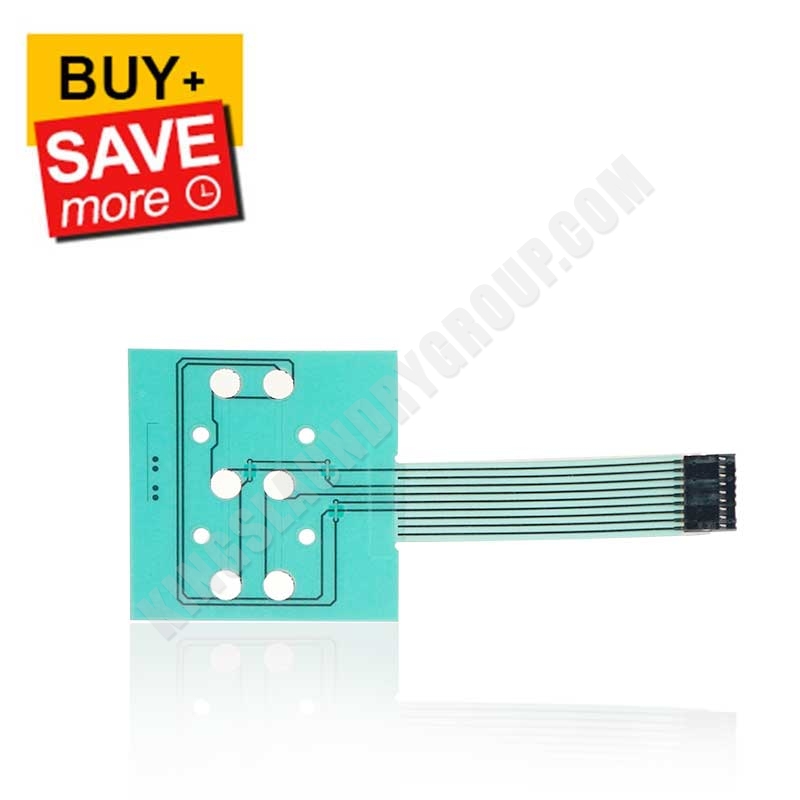Membrane Switches vs. Traditional Switches: What You Need to Know
Membrane Switches vs. Traditional Switches: What You Need to Know
Blog Article
Discovering the Benefits of Membrane Changes for Modern Electronic Devices
The exploration of membrane buttons in contemporary electronic gadgets uses an interesting perspective on their myriad benefits, especially in regards to style versatility, sturdiness, and cost-effectiveness. These interfaces not just stand up to severe environmental problems yet additionally offer a high level of personalization, which is significantly important in today's open market. As markets remain to develop, the function of membrane layer switches in boosting individual experience and operational effectiveness warrants better assessment. Understanding exactly how these elements can shape the future of electronic applications may expose understandings that can affect design and production strategies dramatically.
Benefits of Membrane Layer Switches
Membrane layer switches are significantly favored in modern electronics because of their countless benefits. One of the main benefits is their small layout, which allows for space-efficient integration into different devices. This slim profile not just conserves area but additionally adds to the overall aesthetic allure of digital products.
An additional benefit is their toughness. Membrane buttons are generally immune to wetness, dirt, and contaminants, making them optimal for use in atmospheres where direct exposure to harsh problems is a problem. This resistance prolongs the life-span of the switches, decreasing the demand for constant substitutes and upkeep.
Furthermore, membrane layer switches over offer exceptional responsive feedback, boosting user experience. The responsive action is often created to provide a satisfying sensation upon activation, which can enhance individual contentment and effectiveness.
Additionally, the production procedure of membrane layer buttons is cost-effective, enabling reduced manufacturing prices contrasted to standard mechanical buttons. This affordability makes them appropriate for a vast array of applications, from consumer electronics to industrial machinery.
Design Flexibility and Modification
The style versatility and personalization options used by membrane layer switches even more boost their allure in contemporary electronic devices. These switches can be customized to satisfy details aesthetic and functional requirements, permitting manufacturers to produce devices that straighten closely with brand name identification and customer preferences. With numerous options in terms of shades, shapes, and dimensions, membrane layer switches can flawlessly integrate into diverse item styles, whether for consumer electronics, industrial applications, or medical tools.
Furthermore, the ability to include graphics and symbols straight onto the switch surface area improves use while minimizing the demand for extra labeling. This assimilation not just simplifies production procedures however also adds to a sleeker total appearance. The layout can be further customized with functions such as backlighting, tactile feedback, and multi-layer building and constructions, offering improved customer interaction.

Toughness and Environmental Resistance

Furthermore, membrane layer buttons can be engineered to be chemically immune, making them appropriate for applications in industrial environments where exposure to solvents and cleansing agents prevails. The encapsulation of digital parts within the membrane framework provides added security against environmental stresses, ensuring reputable efficiency even in difficult problems.
Along with physical toughness, membrane layer switches exhibition superb resistance to UV light, protecting against degradation and staining with time (membrane switch). This particular is specifically beneficial for exterior applications, where long term exposure to sunlight can jeopardize other switch kinds
Ultimately, the durability and environmental resistance of membrane layer changes make them an excellent selection for a vast array of modern digital devices, from medical equipment to customer electronics, ensuring consistent capability and customer contentment throughout numerous applications.
Cost-Effectiveness in Production
Cost-effectiveness in manufacturing is a substantial benefit of membrane buttons, making them a favored selection for manufacturers in different markets. The production procedure of membrane switches over normally entails less products contrasted to standard switches, which minimizes raw product prices. This structured link production process not just conserves cash however likewise decreases waste, straightening with contemporary sustainability goals.
Moreover, membrane layer switches can be generated using automated techniques, enabling high-volume result with reduced labor prices. The integration of innovative printing technologies even more boosts performance, allowing manufacturers to attain intricate designs and functionalities without incurring considerable added expenditures. This scalability makes certain that production can adjust to transforming market needs without jeopardizing high quality or boosting prices.

In addition, the light-weight nature of membrane layer switches over adds to cost savings in shipping and handling, along with in the overall layout of electronic gadgets. By getting rid of large elements, makers can optimize the general product design, thus improving market competitiveness. Generally, the cost-effectiveness of membrane layer changes not only benefits producers economically but additionally assists in technology and fast product development in the dynamic landscape of modern electronic devices.
Applications in Numerous Industries
Convenience sticks out as a trademark of membrane layer switches, allowing them to find applications across a variety of sectors. In the health care sector, these buttons are indispensable to medical devices, providing easy to use interfaces for equipment like mixture pumps and diagnostic machines. Their resistance to moisture and simple cleaning make them ideal for environments needing stringent hygiene requirements.
In the automotive sector, membrane layer buttons add to the functionality of control panels and control board, supplying a smooth, modern look while ensuring resilience versus severe conditions. Their lightweight design also supports overall car performance.

Additionally, industrial equipment utilizes membrane layer switches for functional controls. Their robust nature and customizable functions deal with the specific requirements of diverse applications.
Final Thought
Finally, membrane layer switches over offer considerable advantages for contemporary electronics, including layout flexibility, durability, and cost-effectiveness. membrane switch. Their customizable functions and resistance to ecological aspects make them appropriate for a large array of applications throughout different markets. As technical needs continue to progress, the adaptability and effectiveness of membrane layer switches over placement them as a crucial part in boosting user experience and driving innovation within the competitive landscape of digital gadgets
Report this page